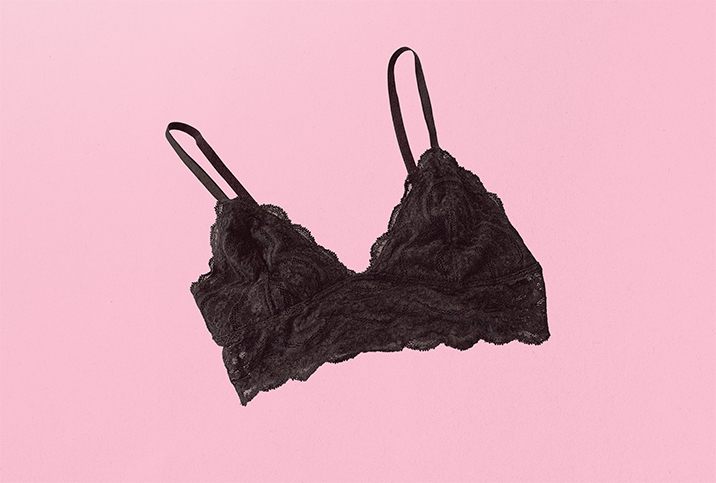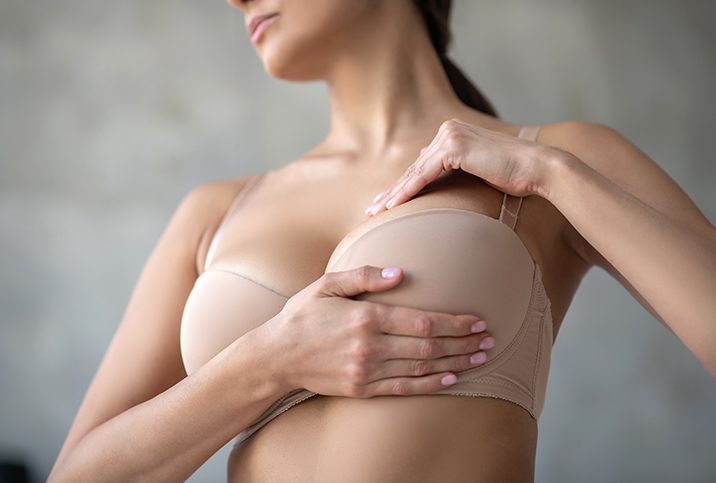The New Army Tactical Bra Addresses Safety and Support

Editor's note: Some of the sources for this article requested their full names and locations not be used.
Maj. Erin Williams was excited when she heard about the new Army tactical brassiere (ATB), which, if approved, would be the first uniform bra in Army history. As a former engineer officer and route clearance platoon leader in Afghanistan with extensive field training, she is very familiar with the physical rigors of military life.
Currently, female soldiers wear any neutral-colored commercial bra of their choice, but that is not enough.
"We need bras that will be supportive while we ruck around training areas, work on vehicles, move heavy loads, practice tactics, but that are also comfortable to wear 24 hours a day," said Williams, of New York.
Commercial bras are also not flame resistant. Flame-resistant bras are provided only to aviator and combat vehicle crews, but in limited sizes and they are not suitable for high-impact dismounted activities, according to the Army.
ATB team addresses the uniform concerns
Annette LaFleur is the team leader of the Design, Pattern & Prototype Team at the Army Combat Capabilities Development Command (DEVCOM) Soldier Center in Washington, D.C. LaFleur, along with experimental clothing designers such as Ashley Cushon in Boston, has been working to develop undergarments that are more inclusive of the needs of all female soldiers in both field training and combat scenarios.
LaFleur first got involved when Maj. Gen. Barbara R. Holcomb, the deputy commanding general, Army Medical Command, and chief of the Army Nurse Corps, reached out to the technical director of the DEVCOM Soldier Center about the limitations of the current sports bras.
Hundreds of female soldiers from a variety of military occupational specialties were surveyed, allowing the team to gauge factors such as style, length of wear and location, with particular attention to soldiers in situations where they would be wearing personal protective equipment, such as body armor and helmets.
The result is four unique, flame-resistant prototypes, each tested by more than 200 soldiers from different military divisions. As LaFleur stated, the prototypes represent "different bra options designed to accommodate individual preferences, match activity level and meet the need of specific tasks."
The four prototypes include the following:
Concept A: A pullover-style sports bra with padded cups and structured seaming. It features mesh venting, adjustable racerback straps, an inner dog tag pocket and flame-resistant protection.
Concept B: A pullover shelf-style sports bra with contoured seams, racerback straps and flame-resistant protection.
Concept C: An optimized compression sports bra featuring an adjustable front panel for customized support, cross-back straps, contoured seaming and flame-resistant protection.
Concept D: A combination cup sports bra featuring adjustable cross-back straps and underband, contoured seaming, zippered front closure and flame-resistant protection.
Response to the new ATB
The tactical bra remains in the research and development stage and a timeline for its official rollout has not been determined.
"These technologies and research findings will also provide insights as to how specific performance requirements can be defined for these and other soldier-worn garments," LaFleur stated.
Cushon said the response from female soldiers who tested the products has been very positive.
“We also saw their genuine excitement towards the opportunity to learn more about bra fitting and sizing, which was offered as part of the test plan and had not previously been offered to female soldiers," she said.
"This hands-on experience allowed soldiers to apply lessons learned in real time during their fittings and was considered to be one of the most valuable components," Cushon added.
But what do female soldiers really think?
Sgt. Caroline Vargas thinks it's about time the Army moved forward with such a uniform initiative for female soldiers.
"This is a basic need as an Army female. I didn't choose to have boobs," Vargas said.
She thinks providing new bra options can help improve female enlistment and retention, because it shows the Army is looking out for the needs of its female population. She would have appreciated being issued one of these new tactical garments as a young Army soldier.
"During basic training, the Army issued me everything else. This definitely would have been something that would've helped me a lot during my time there," Vargas added.
Lt. Col. Amy N. agreed that this uniform item would have made her deployments go a little smoother.
"With four operational deployments under my belt, in the most austere environments, I can definitively say that having [an item like this] available to me as part of standard issue would have eased packing-list anxiety and contributed to operational effectiveness," she said.
Capt. Nicole D. was deployed to Iraq in 2006 and issued a commercial sports bra that she described as "flimsy" and did not hold up for the duration of her tour.
"It's great the Army is exercising some effort to improve the elements of the uniform unique to female soldiers," she said.
Hopefully, the Army tactical brassiere will be in the hands of female soldiers sooner rather than later. After all, female soldiers, particularly those in dangerous combat roles, should be provided with everything they need to train and deploy effectively.
Editor's note: Maj. Erin Williams, Sgt. Caroline Vargas, Lt. Col. Amy N. and Capt. Nicole D. spoke from personal experience and not as official representatives of the U.S. Army.


















